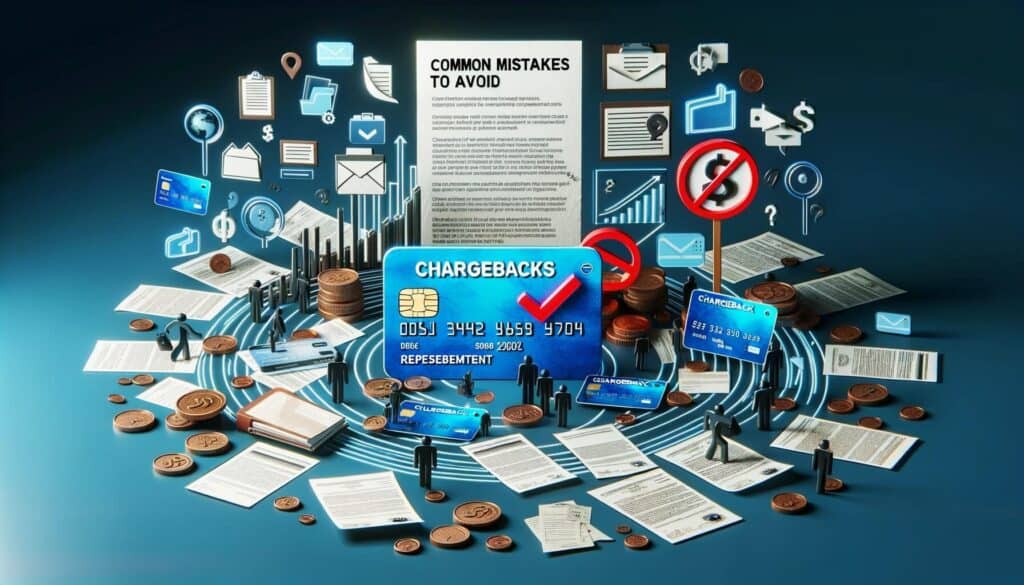
By Mollie Mills February 28, 2025
Chargebacks are a common occurrence in the world of business, particularly in the e-commerce industry. They can be a frustrating and costly experience for merchants, as they often result in lost revenue and additional fees. However, there is a process known as chargeback representment that can help merchants fight back against unjustified chargebacks and recover their funds.
In this article, we will explore what chargeback representment is, how it works, and the key strategies for successful representment.
Understanding Chargebacks: Causes and Consequences
Before delving into chargeback representment, it is important to understand the causes and consequences of chargebacks. A chargeback occurs when a customer disputes a transaction and requests a refund directly from their bank or credit card issuer. There are various reasons why chargebacks may occur, including fraud, dissatisfaction with the product or service, or unauthorized transactions. Regardless of the reason, chargebacks can have significant consequences for merchants, including financial losses, damage to reputation, and increased fees from payment processors.
What is Chargeback Representment?
Chargeback representment is the process by which merchants dispute and challenge chargebacks in order to recover lost funds. It involves gathering evidence and submitting a compelling case to the bank or credit card issuer that issued the chargeback. The goal of representment is to prove that the chargeback is unjustified and that the merchant should be allowed to keep the funds. Representment can be a complex and time-consuming process, but it is often worth the effort for merchants who believe they have a strong case.
The Process of Chargeback Representment

The process of chargeback representment typically involves several steps. First, the merchant receives a chargeback notification from their payment processor or acquiring bank. This notification includes details about the chargeback, such as the reason code and the amount of the disputed transaction. The merchant then has a limited amount of time to respond to the chargeback and gather evidence to support their case.
The next step is to compile the necessary documentation and evidence. This may include order details, shipping information, customer communication, and any other relevant information that can help prove the validity of the transaction. It is crucial for merchants to keep detailed records and documentation to support their representment efforts.
Once the evidence is gathered, the merchant can submit their case to the bank or credit card issuer that issued the chargeback. This is typically done through the payment processor or acquiring bank, who acts as an intermediary between the merchant and the issuing bank. The merchant’s case is then reviewed by the issuing bank, who will make a decision based on the evidence presented.
If the representment is successful, the chargeback is reversed, and the merchant’s funds are returned. However, if the representment is unsuccessful, the chargeback stands, and the merchant loses the disputed funds.
Key Strategies for Successful Chargeback Representment

Successfully challenging chargebacks requires a strategic approach. Here are some key strategies that merchants can employ to increase their chances of successful representment:
1. Understand the reason code: Each chargeback is assigned a reason code, which indicates the specific reason for the dispute. It is important for merchants to understand the reason code and tailor their representment efforts accordingly. By addressing the specific reason for the chargeback, merchants can present a more compelling case.
2. Gather compelling evidence: The strength of a representment case lies in the evidence presented. Merchants should gather as much relevant evidence as possible, including order details, shipping information, customer communication, and any other documentation that supports the validity of the transaction. The more compelling the evidence, the higher the chances of successful representment.
3. Respond promptly: Time is of the essence when it comes to chargeback representment. Merchants should respond to chargebacks promptly and adhere to the specified timelines for submitting evidence. Delaying the response can weaken the case and reduce the chances of successful representment.
4. Maintain detailed records: Keeping detailed records of all transactions, customer communication, and order details is crucial for successful representment. These records serve as evidence and can help merchants build a strong case against unjustified chargebacks. Implementing a robust record-keeping system is essential for effective representment.
5. Monitor chargeback trends: By monitoring chargeback trends, merchants can identify patterns and take proactive measures to prevent future chargebacks. Analyzing the reasons for chargebacks and addressing any underlying issues can help reduce the likelihood of future disputes.
Common Mistakes to Avoid in Chargeback Representment

While there are strategies for successful chargeback representment, there are also common mistakes that merchants should avoid. These mistakes can weaken the representment case and reduce the chances of recovering funds. Here are some common mistakes to avoid:
1. Ignoring chargebacks: Ignoring chargebacks and not responding promptly can result in automatic loss of funds. It is crucial for merchants to take chargebacks seriously and respond within the specified timelines.
2. Lack of evidence: Insufficient or weak evidence is a common mistake in representment cases. Merchants should ensure they have gathered all relevant documentation and evidence to support their case. Without compelling evidence, the chances of successful representment are significantly reduced.
3. Inconsistent record-keeping: Inconsistent record-keeping can make it difficult for merchants to gather the necessary evidence for representment. It is important to implement a consistent and organized record-keeping system to ensure all relevant information is readily available when needed.
4. Failing to understand reason codes: Each chargeback is assigned a reason code, which indicates the specific reason for the dispute. Failing to understand the reason code can result in ineffective representment efforts. Merchants should familiarize themselves with the reason codes and tailor their responses accordingly.
5. Lack of communication with customers: Communication with customers is crucial in preventing chargebacks and resolving disputes. Failing to communicate effectively with customers can result in escalated disputes and increased chargebacks. Maintaining open lines of communication and addressing customer concerns promptly can help prevent chargebacks from occurring in the first place.
The Role of Documentation in Chargeback Representment

Documentation plays a critical role in chargeback representment. It serves as evidence to support the merchant’s case and can significantly impact the outcome of the representment process. Here are some key aspects of documentation in chargeback representment:
1. Order details: Detailed order information, including the date, time, and amount of the transaction, is essential for representment. Merchants should ensure they have accurate and complete order details to prove the validity of the transaction.
2. Shipping information: If the transaction involves physical goods, shipping information can be crucial in proving that the product was delivered to the customer. Merchants should keep records of shipping receipts, tracking numbers, and delivery confirmation to support their case.
3. Customer communication: Any communication between the merchant and the customer can be valuable evidence in representment cases. This includes emails, chat logs, and any other form of communication that can help prove the customer’s satisfaction with the product or service.
4. Terms and conditions: Merchants should keep a record of their terms and conditions, including any refund or return policies. These terms and conditions can be used to demonstrate that the customer was aware of the merchant’s policies and agreed to them at the time of the transaction.
5. Payment authorization: Proof of payment authorization, such as signed receipts or electronic authorization records, can help prove that the customer authorized the transaction. This can be crucial in cases where the customer claims the transaction was unauthorized.
Leveraging Technology for Effective Chargeback Representment
Technology can play a significant role in streamlining and enhancing the chargeback representment process. Here are some ways merchants can leverage technology for effective representment:
1. Chargeback management software: Chargeback management software can automate and streamline the representment process. These software solutions help merchants track and manage chargebacks, gather evidence, and submit cases to issuing banks. They can also provide analytics and insights to help merchants identify chargeback trends and take proactive measures to prevent future disputes.
2. Fraud detection tools: Fraud detection tools can help merchants identify and prevent fraudulent transactions, reducing the likelihood of chargebacks. These tools use advanced algorithms and machine learning to analyze transaction data and detect suspicious patterns or behaviors.
3. Customer dispute resolution platforms: Customer dispute resolution platforms provide a centralized system for managing and resolving customer disputes. These platforms allow merchants to communicate with customers, gather evidence, and resolve disputes in a timely and efficient manner. By providing a seamless and transparent dispute resolution process, these platforms can help prevent chargebacks from escalating.
4. Data analytics: Data analytics can provide valuable insights into chargeback trends and patterns. By analyzing transaction data, merchants can identify the root causes of chargebacks and take proactive measures to address them. Data analytics can also help merchants identify fraudulent activities and implement fraud prevention strategies.
Frequently Asked Questions about Chargeback Representment
Q1. What is the difference between a chargeback and chargeback representment?
Answer: A chargeback occurs when a customer disputes a transaction and requests a refund directly from their bank or credit card issuer. Chargeback representment is the process by which merchants dispute and challenge chargebacks in order to recover lost funds.
Q2. How long do I have to respond to a chargeback?
Answer: The timeframe for responding to a chargeback varies depending on the payment processor and the reason code. Typically, merchants have a limited amount of time, usually between 7 and 14 days, to respond to a chargeback.
Q3. What evidence should I gather for chargeback representment?
Answer: Merchants should gather as much relevant evidence as possible, including order details, shipping information, customer communication, and any other documentation that supports the validity of the transaction. The more compelling the evidence, the higher the chances of successful representment.
Q4. Can I prevent chargebacks from occurring in the first place?
Answer: While it is not possible to prevent all chargebacks, there are measures merchants can take to reduce the likelihood of disputes. These include implementing fraud detection tools, maintaining open lines of communication with customers, and addressing customer concerns promptly.
Q5. How can technology help with chargeback representment?
Answer: Technology can streamline and enhance the chargeback representment process. Chargeback management software, fraud detection tools, customer dispute resolution platforms, and data analytics can all help merchants manage chargebacks more effectively and increase their chances of successful representment.
Conclusion
Chargeback representment is a crucial process for merchants to recover lost funds and fight back against unjustified chargebacks. By understanding the causes and consequences of chargebacks, merchants can take proactive measures to prevent disputes and minimize financial losses.
Implementing key strategies, avoiding common mistakes, and leveraging technology can significantly increase the chances of successful representment. By maintaining detailed records, gathering compelling evidence, and responding promptly to chargebacks, merchants can navigate the representment process with confidence and protect their revenue.